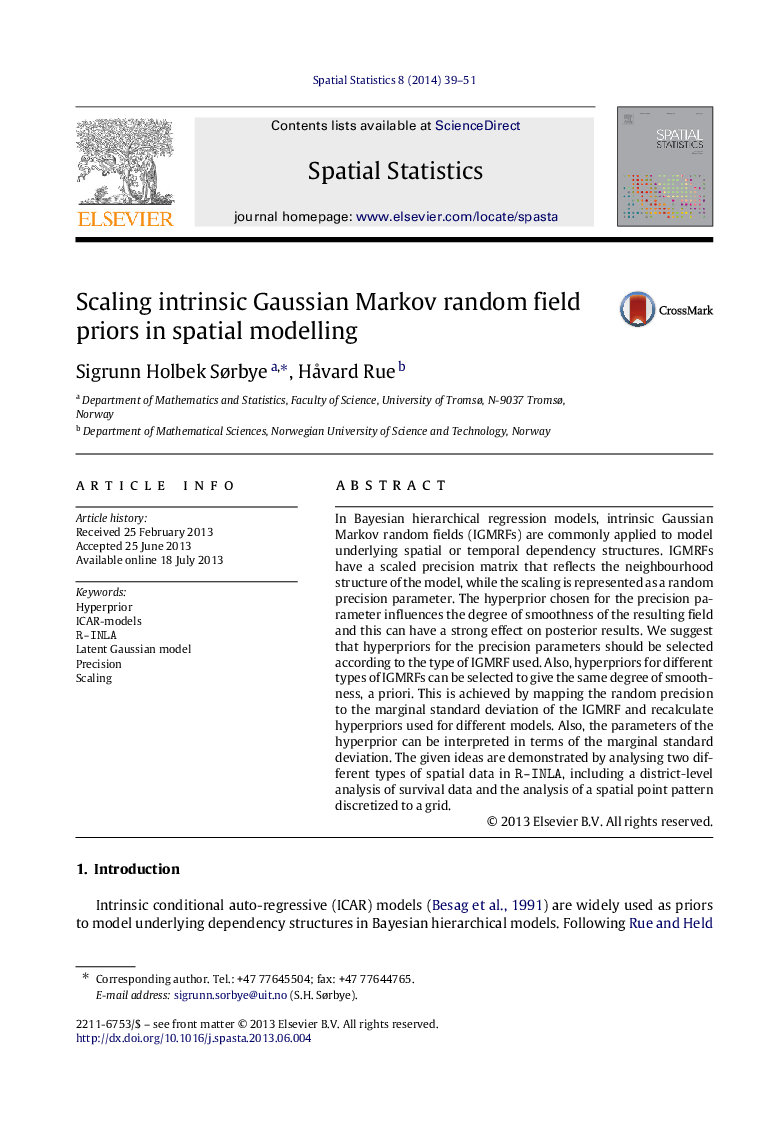| Article ID | Journal | Published Year | Pages | File Type |
|---|---|---|---|---|
| 1064556 | Spatial Statistics | 2014 | 13 Pages |
In Bayesian hierarchical regression models, intrinsic Gaussian Markov random fields (IGMRFs) are commonly applied to model underlying spatial or temporal dependency structures. IGMRFs have a scaled precision matrix that reflects the neighbourhood structure of the model, while the scaling is represented as a random precision parameter. The hyperprior chosen for the precision parameter influences the degree of smoothness of the resulting field and this can have a strong effect on posterior results. We suggest that hyperpriors for the precision parameters should be selected according to the type of IGMRF used. Also, hyperpriors for different types of IGMRFs can be selected to give the same degree of smoothness, a priori. This is achieved by mapping the random precision to the marginal standard deviation of the IGMRF and recalculate hyperpriors used for different models. Also, the parameters of the hyperprior can be interpreted in terms of the marginal standard deviation. The given ideas are demonstrated by analysing two different types of spatial data in R-INLA, including a district-level analysis of survival data and the analysis of a spatial point pattern discretized to a grid.
